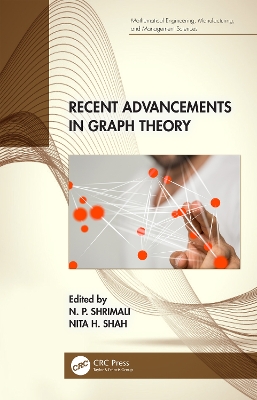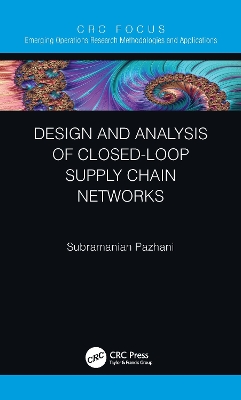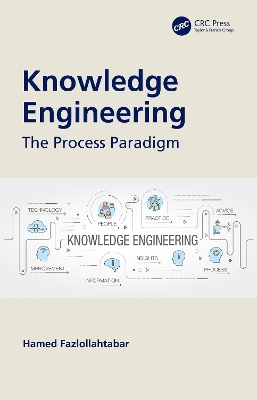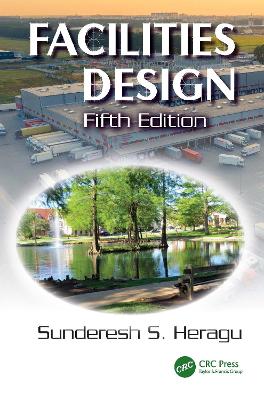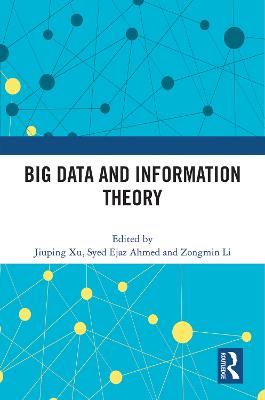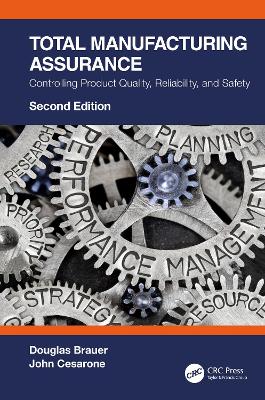Business Process Analytics
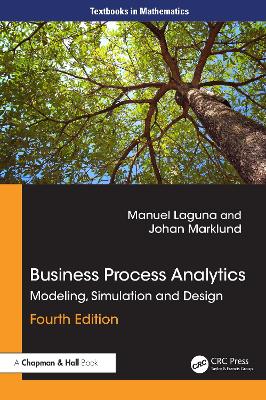 portes grátis
portes grátis
Business Process Analytics
Modeling, Simulation and Design
Laguna, Manuel; Marklund, Johan
Taylor & Francis Ltd
11/2024
544
Dura
9781032595429
Pré-lançamento - envio 15 a 20 dias após a sua edição
Descrição não disponível.
1. INTRODUCTION TO BUSINESS PROCESS DESIGN
1.1 What is a Business Process?
1.1.1 Process Types and Hierarchies
1.1.2 Determinants of the Process Architecture
1.1.3 Workflow Management Systems
1.2 The Essence of Business Process Design
1.2.1 Incremental Process Improvement and Process Design
1.2.2 An Illustrative Example
1.3 Business Process Design, Overall Business Performance and Strategy
1.3.1 Business Process Design and Overall Business Performance
1.3.2 Business Process Design and Strategy
1.4 Why do Inefficient and Ineffective Business Processes Exists
1.5 Summary
Discussion Questions and Exercises
References
2. DATA ANALYTICS AND PROCESS IMPROVEMENT
2.1 Process Management and a Process View
2.1.1 An Illustrative Example: Managing a Document Distribution Process
2.1.1.1 Assign Process Ownership
2.1.1.2 Analyze Boundaries and Interfaces
2.1.1.3 Define the Process
2.1.1.4 Establish Control Points
2.1.1.5 Develop and Implement Measures
2.1.1.6 Perform Feedback and Control
2.1.2 Summary and Final Remarks
2.2 Data-driven Process Improvement
2.2.1 Data Collection
2.2.2 Data Visualization
2.2.2.1 Charts and Diagrams
2.2.2.2 Heatmaps
2.3 Six Sigma Quality Programs
2.3.1 Six Sigma Definitions
2.3.2 The Six Sigma Cost and Revenue Rationale
2.3.2.1 The Cost or Efficiency Rationale
2.3.2.2 The Revenue or Effectiveness Rationale
2.3.3 Six Sigma in Product and Process Design
2.3.4 The Six Sigma Framework
2.3.4.1 Top Management Commitment
2.3.4.2 Stakeholder Involvement
2.3.4.3 Training
2.3.4.4 Measurement System
2.3.4.5 The Improvement Methodology
2.3.5 Control Charts
2.3.5.1 Average Waiting Time in a Call Center
2.3.5.2 Individual Waiting Time in a Call Center
2.3.6 Key Reasons for the Success of Six Sigma
2.4 Business Process Management
2.4.1 Types of BPM
2.4.2 BPM Lifecycle
2.4.3 BPM Potential Benefits
2.4.4 Typical Areas of Application
2.5 Evolutionary versus Revolutionary Change
2.6 Summary
Discussion Questions and Exercises
References
3. A FRAMEWORK FOR BUSINESS PROCESSES DESIGN PROJECTS
3.1 Step 1: Case for Action and Vision Statements
3.2 Step 2: Process Identification and Selection
3.3 Step 3: Obtaining Management Commitment
3.4 Step 4: Evaluation of Design Enablers
3.4.1 Example: The Internet Enabling Change at Chase Manhattan Bank
3.4.2 Example: New Technology as a Change Enabler in the Grocery Industry
3.5 Step 5: Acquiring Process Understanding
3.5.1 Understanding the Existing Process
3.5.2 Understanding the Customer
3.6 Step 6: Creative Process Design
3.6.1 Benchmarking
3.6.2 Design Principles
3.6.3 The Devil's Quadrangle
3.7 Step 7: Process Modeling and Simulation
3.8 Step 8: Implementation of the New Process Design
3.9 Summary
Discussion Questions and Exercises
References
4. BASIC TOOLS FOR PROCESS DESIGN
4.1 Process Flow Analysis
4.1.1 General Process Charts
4.1.2 Process Flow Diagrams
4.1.3 Process Activity Charts
4.1.4 Flowcharts
4.1.5 Service System Maps
4.2 Workflow Design Principles and Tools
4.2.1 Establish a Product Orientation in the Process
4.2.2 Eliminate Buffers
4.2.3 Establish One-at-a-Time Processing
4.2.4 Balance the Flow to the Bottleneck
4.2.5 Minimize Sequential Processing and Handoffs
4.2.6 Establish an Efficient Processing of Work
4.2.7 Minimize Multiple Paths through Operations
4.3 Additional Diagramming Tools
4.4 From Theory to Practice: Designing an Order Picking Process
4.5 Summary
Discussion Questions and Exercises
References
5. MANAGING PROCESS FLOWS
5.1 Business Processes and Flows
5.1.1 Throughput Rate
5.1.2 Work-in-process
5.1.3 Cycle Time
5.1.4 Little's Law
5.2 Cycle Time and Capacity Analysis
5.2.1 Cycle Time Analysis
5.2.1.1 Rework
5.2.1.2 Multiple Paths
5.2.1.3 Parallel Activities
5.2.2 Capacity Analysis
5.2.2.1 Rework
5.2.2.2 Multiple Paths
5.2.2.3 Parallel Activities
5.3 Managing Cycle Time and Capacity
5.3.1 Cycle Time Reduction
5.3.2 Increasing Process Capacity
5.4 Theory of Constraints
5.4.1 Drum-Buffer-Rope Systems
5.5 Summary
Discussion Questions and Exercises
References
6. INTRODUCTION TO QUEUING MODELING
6.1 Queuing Systems, the Basic Queuing Process and Queuing Strategies
6.1.1 The Basic Queuing Process
6.1.2 Strategies for Mitigating the Effects of Long Queues
6.2 Analytical Queuing Models
6.2.1 The Exponential Distribution and its Role in Queuing Theory
6.2.2 Terminology, Notation and Little's Law Revisited
6.2.3 Birth and Death Processes
6.2.4 The M/M/1 Model
6.2.5 The M/M/c Model
6.2.6 The M/M/c/K Model
6.2.7 The M/M/c/Y/N Model
6.2.8 Queuing Theory and Process Design
6.3 Summary
Appendix 6A: Mathematical Derivations and Models with Generally Distributed Service Times
6A.1 Mathematical Derivations of Key Results
6A.1.1 The exponential distribution
6A.1.2 Birth-and-death processes
6A.1.3 The M/M/1 Model
6A.2 Queuing Models with Generally Distributed Service Times
6A.2.1 The M/G/1 queuing model
6A.2.2 The M/G/Y queuing model
Discussion Questions and Exercises
References
7. INTRODUCTION TO SIMULATION
7.1 Simulation Models
7.2 Discrete Event Simulation
7.3 Getting Started in Simulation Modeling
7.4 An Illustrative Example
7.5 Spreadsheet Simulation of a Process
7.6 Successful Simulation in Practice
7.7 When not to Simulate
7.8 Summary
Discussion Questions and Exercises
References
8. MODELING AND SIMULATING BUSINESS PROCESSES WITH ExtendSim
8.1 Developing a Simulation Model - Principles and Concepts
8.1.1 Model Verification
8.1.2 Model Validation
8.2 ExtendSim Elements
8.3 ExtendSim Tutorial: A Basic Queuing Model
8.4 Basic Data Collection and Statistical Analysis
8.5 Adding Randomness to Processing Times and the use of Attributes
8.6 Adding a Second Underwriting Team
8.7 Modeling Resources and Resource Pools
8.8 Customizing the Animation
8.9 Calculating Activity Based Costs
8.10 Cycle Time Analysis
8.11 Modeling Advanced Queuing Features
8.11.1 Blocking
8.11.2 Balking
8.11.3 Reneging
8.11.4 Priorities and Priority Queues
8.12 Modeling Routing in Multiple Paths and Parallel Paths
8.12.1 Multiple Paths
8.12.2 Parallel Paths
8.13 Model Documentation and Enhancements
8.14 Summary
Discussion Questions and Exercises
References
9. INPUT AND OUTPUT DATA ANALYSIS
9.1 Dealing with Randomness
9.2 Characterizing Probability Distributions of Field Data
9.2.1 Goodness-of-Fit Tests
9.2.2 Using Stat::Fit for Distribution Fitting
9.2.3 Choosing a Distribution in the Absence of Sample Data
9.3 Random Number Generators
9.3.1 The Runs Test
9.4 Generation of Random Variates
9.5 Analysis of Simulation Output Data
9.5.1 Nonterminating Processes
9.5.2 Terminating Processes
9.5.3 Confidence Intervals
9.5.4 Sample Size Calculation
9.5.5 Comparing Output Variables for Different Process Designs
9.6 Modeling and Analysis of Process Design Cases
9.6.1 Process Design of a Call Center for Software Support
9.6.2 Design of a Hospital Admissions Process
9.7 Summary
9.8 Training cases
9.8.1 CASE 1: IMPROVING THE X-RAY PROCESS AT COUNTY HOSPITAL
9.8.2 CASE 2: PROCESS MODELING AND ANALYSIS IN AN ASSEMBLY FACTORY
9.8.3 CASE 3: REDESIGN OF A CREDIT APPLICATIONS PROCESS
9.8.4 CASE 4: REDISIGNING THE ADOPTION PROCESS IN A HUMANE SOCIETY
9.8.5 CASE 5: PERFORMANCE ANALYSIS AND IMPROVEMENT OF AN INTERNET ORDERING PROCESS
Appendix 9A: Hypothesis Testing, Confidence Intervals, and Statistical Tables
9A.1 Goodness-of-Fit Tests
9A.1.1 The Chi-Square Test
9A.1.2 The Kolmogorov-Smirnov Test
9A.2 Confidence Interval for a Population Proportion
9A.3 Hypothesis Testing
9A.4 Statistical Tables
Exercises
References
10. PRESCRIPTIVE ANALYTICS FOR PROCESS PERFORMANCE OPTIMIZATION
10.1 Identifying the Main Drivers of Process Performance
10.1.1 Factorial Design for Simulation Models
10.1.2 Illustrative Example of Design of Experiments
10.2 Business Process Optimization
10.3 The Role of Simulation Optimization in Business Process Management
104 Simulation-Optimization with ExtendSim
10.4.1 Tutorial: Process Optimization with ExtendSim
10.4.2 Alternative Optimization Models
10.5 Optimization of Process Simulation Models
10.5.1 Configuring a Hospital Emergency Room Process
10.5.2 Staffing Levels for a Personal Insurance Claims Process
10.6 Summary
Appendix 10A: Evolutionary Computation
Exercises
Simulation-Optimization Projects
Project 1: Emergency Room Staffing
Project 2: Call Center Configuration
Project 3: Loan Application Process
Project 4: Process with Multiple Job Types and Deadlines
References
11. BUSINESS PROCESS ANALYTICS
11.1 Competing on Analytics
11.2 Business Process Management Systems
11.2.1 Business Rules
11.2.2 Monitor and Control
11.2.3 Process Mining
11.3 Machine Learning
11.3.1 Support Vector Machines
11.3.2 k-Nearest Neighbor Classifier
11.3.3 Neural Networks
11.3.4 Classification Problems in Business Processes
Discussion Questions and Exercises
References
1.1 What is a Business Process?
1.1.1 Process Types and Hierarchies
1.1.2 Determinants of the Process Architecture
1.1.3 Workflow Management Systems
1.2 The Essence of Business Process Design
1.2.1 Incremental Process Improvement and Process Design
1.2.2 An Illustrative Example
1.3 Business Process Design, Overall Business Performance and Strategy
1.3.1 Business Process Design and Overall Business Performance
1.3.2 Business Process Design and Strategy
1.4 Why do Inefficient and Ineffective Business Processes Exists
1.5 Summary
Discussion Questions and Exercises
References
2. DATA ANALYTICS AND PROCESS IMPROVEMENT
2.1 Process Management and a Process View
2.1.1 An Illustrative Example: Managing a Document Distribution Process
2.1.1.1 Assign Process Ownership
2.1.1.2 Analyze Boundaries and Interfaces
2.1.1.3 Define the Process
2.1.1.4 Establish Control Points
2.1.1.5 Develop and Implement Measures
2.1.1.6 Perform Feedback and Control
2.1.2 Summary and Final Remarks
2.2 Data-driven Process Improvement
2.2.1 Data Collection
2.2.2 Data Visualization
2.2.2.1 Charts and Diagrams
2.2.2.2 Heatmaps
2.3 Six Sigma Quality Programs
2.3.1 Six Sigma Definitions
2.3.2 The Six Sigma Cost and Revenue Rationale
2.3.2.1 The Cost or Efficiency Rationale
2.3.2.2 The Revenue or Effectiveness Rationale
2.3.3 Six Sigma in Product and Process Design
2.3.4 The Six Sigma Framework
2.3.4.1 Top Management Commitment
2.3.4.2 Stakeholder Involvement
2.3.4.3 Training
2.3.4.4 Measurement System
2.3.4.5 The Improvement Methodology
2.3.5 Control Charts
2.3.5.1 Average Waiting Time in a Call Center
2.3.5.2 Individual Waiting Time in a Call Center
2.3.6 Key Reasons for the Success of Six Sigma
2.4 Business Process Management
2.4.1 Types of BPM
2.4.2 BPM Lifecycle
2.4.3 BPM Potential Benefits
2.4.4 Typical Areas of Application
2.5 Evolutionary versus Revolutionary Change
2.6 Summary
Discussion Questions and Exercises
References
3. A FRAMEWORK FOR BUSINESS PROCESSES DESIGN PROJECTS
3.1 Step 1: Case for Action and Vision Statements
3.2 Step 2: Process Identification and Selection
3.3 Step 3: Obtaining Management Commitment
3.4 Step 4: Evaluation of Design Enablers
3.4.1 Example: The Internet Enabling Change at Chase Manhattan Bank
3.4.2 Example: New Technology as a Change Enabler in the Grocery Industry
3.5 Step 5: Acquiring Process Understanding
3.5.1 Understanding the Existing Process
3.5.2 Understanding the Customer
3.6 Step 6: Creative Process Design
3.6.1 Benchmarking
3.6.2 Design Principles
3.6.3 The Devil's Quadrangle
3.7 Step 7: Process Modeling and Simulation
3.8 Step 8: Implementation of the New Process Design
3.9 Summary
Discussion Questions and Exercises
References
4. BASIC TOOLS FOR PROCESS DESIGN
4.1 Process Flow Analysis
4.1.1 General Process Charts
4.1.2 Process Flow Diagrams
4.1.3 Process Activity Charts
4.1.4 Flowcharts
4.1.5 Service System Maps
4.2 Workflow Design Principles and Tools
4.2.1 Establish a Product Orientation in the Process
4.2.2 Eliminate Buffers
4.2.3 Establish One-at-a-Time Processing
4.2.4 Balance the Flow to the Bottleneck
4.2.5 Minimize Sequential Processing and Handoffs
4.2.6 Establish an Efficient Processing of Work
4.2.7 Minimize Multiple Paths through Operations
4.3 Additional Diagramming Tools
4.4 From Theory to Practice: Designing an Order Picking Process
4.5 Summary
Discussion Questions and Exercises
References
5. MANAGING PROCESS FLOWS
5.1 Business Processes and Flows
5.1.1 Throughput Rate
5.1.2 Work-in-process
5.1.3 Cycle Time
5.1.4 Little's Law
5.2 Cycle Time and Capacity Analysis
5.2.1 Cycle Time Analysis
5.2.1.1 Rework
5.2.1.2 Multiple Paths
5.2.1.3 Parallel Activities
5.2.2 Capacity Analysis
5.2.2.1 Rework
5.2.2.2 Multiple Paths
5.2.2.3 Parallel Activities
5.3 Managing Cycle Time and Capacity
5.3.1 Cycle Time Reduction
5.3.2 Increasing Process Capacity
5.4 Theory of Constraints
5.4.1 Drum-Buffer-Rope Systems
5.5 Summary
Discussion Questions and Exercises
References
6. INTRODUCTION TO QUEUING MODELING
6.1 Queuing Systems, the Basic Queuing Process and Queuing Strategies
6.1.1 The Basic Queuing Process
6.1.2 Strategies for Mitigating the Effects of Long Queues
6.2 Analytical Queuing Models
6.2.1 The Exponential Distribution and its Role in Queuing Theory
6.2.2 Terminology, Notation and Little's Law Revisited
6.2.3 Birth and Death Processes
6.2.4 The M/M/1 Model
6.2.5 The M/M/c Model
6.2.6 The M/M/c/K Model
6.2.7 The M/M/c/Y/N Model
6.2.8 Queuing Theory and Process Design
6.3 Summary
Appendix 6A: Mathematical Derivations and Models with Generally Distributed Service Times
6A.1 Mathematical Derivations of Key Results
6A.1.1 The exponential distribution
6A.1.2 Birth-and-death processes
6A.1.3 The M/M/1 Model
6A.2 Queuing Models with Generally Distributed Service Times
6A.2.1 The M/G/1 queuing model
6A.2.2 The M/G/Y queuing model
Discussion Questions and Exercises
References
7. INTRODUCTION TO SIMULATION
7.1 Simulation Models
7.2 Discrete Event Simulation
7.3 Getting Started in Simulation Modeling
7.4 An Illustrative Example
7.5 Spreadsheet Simulation of a Process
7.6 Successful Simulation in Practice
7.7 When not to Simulate
7.8 Summary
Discussion Questions and Exercises
References
8. MODELING AND SIMULATING BUSINESS PROCESSES WITH ExtendSim
8.1 Developing a Simulation Model - Principles and Concepts
8.1.1 Model Verification
8.1.2 Model Validation
8.2 ExtendSim Elements
8.3 ExtendSim Tutorial: A Basic Queuing Model
8.4 Basic Data Collection and Statistical Analysis
8.5 Adding Randomness to Processing Times and the use of Attributes
8.6 Adding a Second Underwriting Team
8.7 Modeling Resources and Resource Pools
8.8 Customizing the Animation
8.9 Calculating Activity Based Costs
8.10 Cycle Time Analysis
8.11 Modeling Advanced Queuing Features
8.11.1 Blocking
8.11.2 Balking
8.11.3 Reneging
8.11.4 Priorities and Priority Queues
8.12 Modeling Routing in Multiple Paths and Parallel Paths
8.12.1 Multiple Paths
8.12.2 Parallel Paths
8.13 Model Documentation and Enhancements
8.14 Summary
Discussion Questions and Exercises
References
9. INPUT AND OUTPUT DATA ANALYSIS
9.1 Dealing with Randomness
9.2 Characterizing Probability Distributions of Field Data
9.2.1 Goodness-of-Fit Tests
9.2.2 Using Stat::Fit for Distribution Fitting
9.2.3 Choosing a Distribution in the Absence of Sample Data
9.3 Random Number Generators
9.3.1 The Runs Test
9.4 Generation of Random Variates
9.5 Analysis of Simulation Output Data
9.5.1 Nonterminating Processes
9.5.2 Terminating Processes
9.5.3 Confidence Intervals
9.5.4 Sample Size Calculation
9.5.5 Comparing Output Variables for Different Process Designs
9.6 Modeling and Analysis of Process Design Cases
9.6.1 Process Design of a Call Center for Software Support
9.6.2 Design of a Hospital Admissions Process
9.7 Summary
9.8 Training cases
9.8.1 CASE 1: IMPROVING THE X-RAY PROCESS AT COUNTY HOSPITAL
9.8.2 CASE 2: PROCESS MODELING AND ANALYSIS IN AN ASSEMBLY FACTORY
9.8.3 CASE 3: REDESIGN OF A CREDIT APPLICATIONS PROCESS
9.8.4 CASE 4: REDISIGNING THE ADOPTION PROCESS IN A HUMANE SOCIETY
9.8.5 CASE 5: PERFORMANCE ANALYSIS AND IMPROVEMENT OF AN INTERNET ORDERING PROCESS
Appendix 9A: Hypothesis Testing, Confidence Intervals, and Statistical Tables
9A.1 Goodness-of-Fit Tests
9A.1.1 The Chi-Square Test
9A.1.2 The Kolmogorov-Smirnov Test
9A.2 Confidence Interval for a Population Proportion
9A.3 Hypothesis Testing
9A.4 Statistical Tables
Exercises
References
10. PRESCRIPTIVE ANALYTICS FOR PROCESS PERFORMANCE OPTIMIZATION
10.1 Identifying the Main Drivers of Process Performance
10.1.1 Factorial Design for Simulation Models
10.1.2 Illustrative Example of Design of Experiments
10.2 Business Process Optimization
10.3 The Role of Simulation Optimization in Business Process Management
104 Simulation-Optimization with ExtendSim
10.4.1 Tutorial: Process Optimization with ExtendSim
10.4.2 Alternative Optimization Models
10.5 Optimization of Process Simulation Models
10.5.1 Configuring a Hospital Emergency Room Process
10.5.2 Staffing Levels for a Personal Insurance Claims Process
10.6 Summary
Appendix 10A: Evolutionary Computation
Exercises
Simulation-Optimization Projects
Project 1: Emergency Room Staffing
Project 2: Call Center Configuration
Project 3: Loan Application Process
Project 4: Process with Multiple Job Types and Deadlines
References
11. BUSINESS PROCESS ANALYTICS
11.1 Competing on Analytics
11.2 Business Process Management Systems
11.2.1 Business Rules
11.2.2 Monitor and Control
11.2.3 Process Mining
11.3 Machine Learning
11.3.1 Support Vector Machines
11.3.2 k-Nearest Neighbor Classifier
11.3.3 Neural Networks
11.3.4 Classification Problems in Business Processes
Discussion Questions and Exercises
References
Este título pertence ao(s) assunto(s) indicados(s). Para ver outros títulos clique no assunto desejado.
business process management textbook;technical and managerial aspects of business process management;tools to design effective business processes;ExtendSim 8;business process analytics;process design and simulation courses;discrete event simulation;analytical queuing methods;operations management;user-friendly simulation software;analytical modeling approach to process design;simulation modeling in business processes;business process design
1. INTRODUCTION TO BUSINESS PROCESS DESIGN
1.1 What is a Business Process?
1.1.1 Process Types and Hierarchies
1.1.2 Determinants of the Process Architecture
1.1.3 Workflow Management Systems
1.2 The Essence of Business Process Design
1.2.1 Incremental Process Improvement and Process Design
1.2.2 An Illustrative Example
1.3 Business Process Design, Overall Business Performance and Strategy
1.3.1 Business Process Design and Overall Business Performance
1.3.2 Business Process Design and Strategy
1.4 Why do Inefficient and Ineffective Business Processes Exists
1.5 Summary
Discussion Questions and Exercises
References
2. DATA ANALYTICS AND PROCESS IMPROVEMENT
2.1 Process Management and a Process View
2.1.1 An Illustrative Example: Managing a Document Distribution Process
2.1.1.1 Assign Process Ownership
2.1.1.2 Analyze Boundaries and Interfaces
2.1.1.3 Define the Process
2.1.1.4 Establish Control Points
2.1.1.5 Develop and Implement Measures
2.1.1.6 Perform Feedback and Control
2.1.2 Summary and Final Remarks
2.2 Data-driven Process Improvement
2.2.1 Data Collection
2.2.2 Data Visualization
2.2.2.1 Charts and Diagrams
2.2.2.2 Heatmaps
2.3 Six Sigma Quality Programs
2.3.1 Six Sigma Definitions
2.3.2 The Six Sigma Cost and Revenue Rationale
2.3.2.1 The Cost or Efficiency Rationale
2.3.2.2 The Revenue or Effectiveness Rationale
2.3.3 Six Sigma in Product and Process Design
2.3.4 The Six Sigma Framework
2.3.4.1 Top Management Commitment
2.3.4.2 Stakeholder Involvement
2.3.4.3 Training
2.3.4.4 Measurement System
2.3.4.5 The Improvement Methodology
2.3.5 Control Charts
2.3.5.1 Average Waiting Time in a Call Center
2.3.5.2 Individual Waiting Time in a Call Center
2.3.6 Key Reasons for the Success of Six Sigma
2.4 Business Process Management
2.4.1 Types of BPM
2.4.2 BPM Lifecycle
2.4.3 BPM Potential Benefits
2.4.4 Typical Areas of Application
2.5 Evolutionary versus Revolutionary Change
2.6 Summary
Discussion Questions and Exercises
References
3. A FRAMEWORK FOR BUSINESS PROCESSES DESIGN PROJECTS
3.1 Step 1: Case for Action and Vision Statements
3.2 Step 2: Process Identification and Selection
3.3 Step 3: Obtaining Management Commitment
3.4 Step 4: Evaluation of Design Enablers
3.4.1 Example: The Internet Enabling Change at Chase Manhattan Bank
3.4.2 Example: New Technology as a Change Enabler in the Grocery Industry
3.5 Step 5: Acquiring Process Understanding
3.5.1 Understanding the Existing Process
3.5.2 Understanding the Customer
3.6 Step 6: Creative Process Design
3.6.1 Benchmarking
3.6.2 Design Principles
3.6.3 The Devil's Quadrangle
3.7 Step 7: Process Modeling and Simulation
3.8 Step 8: Implementation of the New Process Design
3.9 Summary
Discussion Questions and Exercises
References
4. BASIC TOOLS FOR PROCESS DESIGN
4.1 Process Flow Analysis
4.1.1 General Process Charts
4.1.2 Process Flow Diagrams
4.1.3 Process Activity Charts
4.1.4 Flowcharts
4.1.5 Service System Maps
4.2 Workflow Design Principles and Tools
4.2.1 Establish a Product Orientation in the Process
4.2.2 Eliminate Buffers
4.2.3 Establish One-at-a-Time Processing
4.2.4 Balance the Flow to the Bottleneck
4.2.5 Minimize Sequential Processing and Handoffs
4.2.6 Establish an Efficient Processing of Work
4.2.7 Minimize Multiple Paths through Operations
4.3 Additional Diagramming Tools
4.4 From Theory to Practice: Designing an Order Picking Process
4.5 Summary
Discussion Questions and Exercises
References
5. MANAGING PROCESS FLOWS
5.1 Business Processes and Flows
5.1.1 Throughput Rate
5.1.2 Work-in-process
5.1.3 Cycle Time
5.1.4 Little's Law
5.2 Cycle Time and Capacity Analysis
5.2.1 Cycle Time Analysis
5.2.1.1 Rework
5.2.1.2 Multiple Paths
5.2.1.3 Parallel Activities
5.2.2 Capacity Analysis
5.2.2.1 Rework
5.2.2.2 Multiple Paths
5.2.2.3 Parallel Activities
5.3 Managing Cycle Time and Capacity
5.3.1 Cycle Time Reduction
5.3.2 Increasing Process Capacity
5.4 Theory of Constraints
5.4.1 Drum-Buffer-Rope Systems
5.5 Summary
Discussion Questions and Exercises
References
6. INTRODUCTION TO QUEUING MODELING
6.1 Queuing Systems, the Basic Queuing Process and Queuing Strategies
6.1.1 The Basic Queuing Process
6.1.2 Strategies for Mitigating the Effects of Long Queues
6.2 Analytical Queuing Models
6.2.1 The Exponential Distribution and its Role in Queuing Theory
6.2.2 Terminology, Notation and Little's Law Revisited
6.2.3 Birth and Death Processes
6.2.4 The M/M/1 Model
6.2.5 The M/M/c Model
6.2.6 The M/M/c/K Model
6.2.7 The M/M/c/Y/N Model
6.2.8 Queuing Theory and Process Design
6.3 Summary
Appendix 6A: Mathematical Derivations and Models with Generally Distributed Service Times
6A.1 Mathematical Derivations of Key Results
6A.1.1 The exponential distribution
6A.1.2 Birth-and-death processes
6A.1.3 The M/M/1 Model
6A.2 Queuing Models with Generally Distributed Service Times
6A.2.1 The M/G/1 queuing model
6A.2.2 The M/G/Y queuing model
Discussion Questions and Exercises
References
7. INTRODUCTION TO SIMULATION
7.1 Simulation Models
7.2 Discrete Event Simulation
7.3 Getting Started in Simulation Modeling
7.4 An Illustrative Example
7.5 Spreadsheet Simulation of a Process
7.6 Successful Simulation in Practice
7.7 When not to Simulate
7.8 Summary
Discussion Questions and Exercises
References
8. MODELING AND SIMULATING BUSINESS PROCESSES WITH ExtendSim
8.1 Developing a Simulation Model - Principles and Concepts
8.1.1 Model Verification
8.1.2 Model Validation
8.2 ExtendSim Elements
8.3 ExtendSim Tutorial: A Basic Queuing Model
8.4 Basic Data Collection and Statistical Analysis
8.5 Adding Randomness to Processing Times and the use of Attributes
8.6 Adding a Second Underwriting Team
8.7 Modeling Resources and Resource Pools
8.8 Customizing the Animation
8.9 Calculating Activity Based Costs
8.10 Cycle Time Analysis
8.11 Modeling Advanced Queuing Features
8.11.1 Blocking
8.11.2 Balking
8.11.3 Reneging
8.11.4 Priorities and Priority Queues
8.12 Modeling Routing in Multiple Paths and Parallel Paths
8.12.1 Multiple Paths
8.12.2 Parallel Paths
8.13 Model Documentation and Enhancements
8.14 Summary
Discussion Questions and Exercises
References
9. INPUT AND OUTPUT DATA ANALYSIS
9.1 Dealing with Randomness
9.2 Characterizing Probability Distributions of Field Data
9.2.1 Goodness-of-Fit Tests
9.2.2 Using Stat::Fit for Distribution Fitting
9.2.3 Choosing a Distribution in the Absence of Sample Data
9.3 Random Number Generators
9.3.1 The Runs Test
9.4 Generation of Random Variates
9.5 Analysis of Simulation Output Data
9.5.1 Nonterminating Processes
9.5.2 Terminating Processes
9.5.3 Confidence Intervals
9.5.4 Sample Size Calculation
9.5.5 Comparing Output Variables for Different Process Designs
9.6 Modeling and Analysis of Process Design Cases
9.6.1 Process Design of a Call Center for Software Support
9.6.2 Design of a Hospital Admissions Process
9.7 Summary
9.8 Training cases
9.8.1 CASE 1: IMPROVING THE X-RAY PROCESS AT COUNTY HOSPITAL
9.8.2 CASE 2: PROCESS MODELING AND ANALYSIS IN AN ASSEMBLY FACTORY
9.8.3 CASE 3: REDESIGN OF A CREDIT APPLICATIONS PROCESS
9.8.4 CASE 4: REDISIGNING THE ADOPTION PROCESS IN A HUMANE SOCIETY
9.8.5 CASE 5: PERFORMANCE ANALYSIS AND IMPROVEMENT OF AN INTERNET ORDERING PROCESS
Appendix 9A: Hypothesis Testing, Confidence Intervals, and Statistical Tables
9A.1 Goodness-of-Fit Tests
9A.1.1 The Chi-Square Test
9A.1.2 The Kolmogorov-Smirnov Test
9A.2 Confidence Interval for a Population Proportion
9A.3 Hypothesis Testing
9A.4 Statistical Tables
Exercises
References
10. PRESCRIPTIVE ANALYTICS FOR PROCESS PERFORMANCE OPTIMIZATION
10.1 Identifying the Main Drivers of Process Performance
10.1.1 Factorial Design for Simulation Models
10.1.2 Illustrative Example of Design of Experiments
10.2 Business Process Optimization
10.3 The Role of Simulation Optimization in Business Process Management
104 Simulation-Optimization with ExtendSim
10.4.1 Tutorial: Process Optimization with ExtendSim
10.4.2 Alternative Optimization Models
10.5 Optimization of Process Simulation Models
10.5.1 Configuring a Hospital Emergency Room Process
10.5.2 Staffing Levels for a Personal Insurance Claims Process
10.6 Summary
Appendix 10A: Evolutionary Computation
Exercises
Simulation-Optimization Projects
Project 1: Emergency Room Staffing
Project 2: Call Center Configuration
Project 3: Loan Application Process
Project 4: Process with Multiple Job Types and Deadlines
References
11. BUSINESS PROCESS ANALYTICS
11.1 Competing on Analytics
11.2 Business Process Management Systems
11.2.1 Business Rules
11.2.2 Monitor and Control
11.2.3 Process Mining
11.3 Machine Learning
11.3.1 Support Vector Machines
11.3.2 k-Nearest Neighbor Classifier
11.3.3 Neural Networks
11.3.4 Classification Problems in Business Processes
Discussion Questions and Exercises
References
1.1 What is a Business Process?
1.1.1 Process Types and Hierarchies
1.1.2 Determinants of the Process Architecture
1.1.3 Workflow Management Systems
1.2 The Essence of Business Process Design
1.2.1 Incremental Process Improvement and Process Design
1.2.2 An Illustrative Example
1.3 Business Process Design, Overall Business Performance and Strategy
1.3.1 Business Process Design and Overall Business Performance
1.3.2 Business Process Design and Strategy
1.4 Why do Inefficient and Ineffective Business Processes Exists
1.5 Summary
Discussion Questions and Exercises
References
2. DATA ANALYTICS AND PROCESS IMPROVEMENT
2.1 Process Management and a Process View
2.1.1 An Illustrative Example: Managing a Document Distribution Process
2.1.1.1 Assign Process Ownership
2.1.1.2 Analyze Boundaries and Interfaces
2.1.1.3 Define the Process
2.1.1.4 Establish Control Points
2.1.1.5 Develop and Implement Measures
2.1.1.6 Perform Feedback and Control
2.1.2 Summary and Final Remarks
2.2 Data-driven Process Improvement
2.2.1 Data Collection
2.2.2 Data Visualization
2.2.2.1 Charts and Diagrams
2.2.2.2 Heatmaps
2.3 Six Sigma Quality Programs
2.3.1 Six Sigma Definitions
2.3.2 The Six Sigma Cost and Revenue Rationale
2.3.2.1 The Cost or Efficiency Rationale
2.3.2.2 The Revenue or Effectiveness Rationale
2.3.3 Six Sigma in Product and Process Design
2.3.4 The Six Sigma Framework
2.3.4.1 Top Management Commitment
2.3.4.2 Stakeholder Involvement
2.3.4.3 Training
2.3.4.4 Measurement System
2.3.4.5 The Improvement Methodology
2.3.5 Control Charts
2.3.5.1 Average Waiting Time in a Call Center
2.3.5.2 Individual Waiting Time in a Call Center
2.3.6 Key Reasons for the Success of Six Sigma
2.4 Business Process Management
2.4.1 Types of BPM
2.4.2 BPM Lifecycle
2.4.3 BPM Potential Benefits
2.4.4 Typical Areas of Application
2.5 Evolutionary versus Revolutionary Change
2.6 Summary
Discussion Questions and Exercises
References
3. A FRAMEWORK FOR BUSINESS PROCESSES DESIGN PROJECTS
3.1 Step 1: Case for Action and Vision Statements
3.2 Step 2: Process Identification and Selection
3.3 Step 3: Obtaining Management Commitment
3.4 Step 4: Evaluation of Design Enablers
3.4.1 Example: The Internet Enabling Change at Chase Manhattan Bank
3.4.2 Example: New Technology as a Change Enabler in the Grocery Industry
3.5 Step 5: Acquiring Process Understanding
3.5.1 Understanding the Existing Process
3.5.2 Understanding the Customer
3.6 Step 6: Creative Process Design
3.6.1 Benchmarking
3.6.2 Design Principles
3.6.3 The Devil's Quadrangle
3.7 Step 7: Process Modeling and Simulation
3.8 Step 8: Implementation of the New Process Design
3.9 Summary
Discussion Questions and Exercises
References
4. BASIC TOOLS FOR PROCESS DESIGN
4.1 Process Flow Analysis
4.1.1 General Process Charts
4.1.2 Process Flow Diagrams
4.1.3 Process Activity Charts
4.1.4 Flowcharts
4.1.5 Service System Maps
4.2 Workflow Design Principles and Tools
4.2.1 Establish a Product Orientation in the Process
4.2.2 Eliminate Buffers
4.2.3 Establish One-at-a-Time Processing
4.2.4 Balance the Flow to the Bottleneck
4.2.5 Minimize Sequential Processing and Handoffs
4.2.6 Establish an Efficient Processing of Work
4.2.7 Minimize Multiple Paths through Operations
4.3 Additional Diagramming Tools
4.4 From Theory to Practice: Designing an Order Picking Process
4.5 Summary
Discussion Questions and Exercises
References
5. MANAGING PROCESS FLOWS
5.1 Business Processes and Flows
5.1.1 Throughput Rate
5.1.2 Work-in-process
5.1.3 Cycle Time
5.1.4 Little's Law
5.2 Cycle Time and Capacity Analysis
5.2.1 Cycle Time Analysis
5.2.1.1 Rework
5.2.1.2 Multiple Paths
5.2.1.3 Parallel Activities
5.2.2 Capacity Analysis
5.2.2.1 Rework
5.2.2.2 Multiple Paths
5.2.2.3 Parallel Activities
5.3 Managing Cycle Time and Capacity
5.3.1 Cycle Time Reduction
5.3.2 Increasing Process Capacity
5.4 Theory of Constraints
5.4.1 Drum-Buffer-Rope Systems
5.5 Summary
Discussion Questions and Exercises
References
6. INTRODUCTION TO QUEUING MODELING
6.1 Queuing Systems, the Basic Queuing Process and Queuing Strategies
6.1.1 The Basic Queuing Process
6.1.2 Strategies for Mitigating the Effects of Long Queues
6.2 Analytical Queuing Models
6.2.1 The Exponential Distribution and its Role in Queuing Theory
6.2.2 Terminology, Notation and Little's Law Revisited
6.2.3 Birth and Death Processes
6.2.4 The M/M/1 Model
6.2.5 The M/M/c Model
6.2.6 The M/M/c/K Model
6.2.7 The M/M/c/Y/N Model
6.2.8 Queuing Theory and Process Design
6.3 Summary
Appendix 6A: Mathematical Derivations and Models with Generally Distributed Service Times
6A.1 Mathematical Derivations of Key Results
6A.1.1 The exponential distribution
6A.1.2 Birth-and-death processes
6A.1.3 The M/M/1 Model
6A.2 Queuing Models with Generally Distributed Service Times
6A.2.1 The M/G/1 queuing model
6A.2.2 The M/G/Y queuing model
Discussion Questions and Exercises
References
7. INTRODUCTION TO SIMULATION
7.1 Simulation Models
7.2 Discrete Event Simulation
7.3 Getting Started in Simulation Modeling
7.4 An Illustrative Example
7.5 Spreadsheet Simulation of a Process
7.6 Successful Simulation in Practice
7.7 When not to Simulate
7.8 Summary
Discussion Questions and Exercises
References
8. MODELING AND SIMULATING BUSINESS PROCESSES WITH ExtendSim
8.1 Developing a Simulation Model - Principles and Concepts
8.1.1 Model Verification
8.1.2 Model Validation
8.2 ExtendSim Elements
8.3 ExtendSim Tutorial: A Basic Queuing Model
8.4 Basic Data Collection and Statistical Analysis
8.5 Adding Randomness to Processing Times and the use of Attributes
8.6 Adding a Second Underwriting Team
8.7 Modeling Resources and Resource Pools
8.8 Customizing the Animation
8.9 Calculating Activity Based Costs
8.10 Cycle Time Analysis
8.11 Modeling Advanced Queuing Features
8.11.1 Blocking
8.11.2 Balking
8.11.3 Reneging
8.11.4 Priorities and Priority Queues
8.12 Modeling Routing in Multiple Paths and Parallel Paths
8.12.1 Multiple Paths
8.12.2 Parallel Paths
8.13 Model Documentation and Enhancements
8.14 Summary
Discussion Questions and Exercises
References
9. INPUT AND OUTPUT DATA ANALYSIS
9.1 Dealing with Randomness
9.2 Characterizing Probability Distributions of Field Data
9.2.1 Goodness-of-Fit Tests
9.2.2 Using Stat::Fit for Distribution Fitting
9.2.3 Choosing a Distribution in the Absence of Sample Data
9.3 Random Number Generators
9.3.1 The Runs Test
9.4 Generation of Random Variates
9.5 Analysis of Simulation Output Data
9.5.1 Nonterminating Processes
9.5.2 Terminating Processes
9.5.3 Confidence Intervals
9.5.4 Sample Size Calculation
9.5.5 Comparing Output Variables for Different Process Designs
9.6 Modeling and Analysis of Process Design Cases
9.6.1 Process Design of a Call Center for Software Support
9.6.2 Design of a Hospital Admissions Process
9.7 Summary
9.8 Training cases
9.8.1 CASE 1: IMPROVING THE X-RAY PROCESS AT COUNTY HOSPITAL
9.8.2 CASE 2: PROCESS MODELING AND ANALYSIS IN AN ASSEMBLY FACTORY
9.8.3 CASE 3: REDESIGN OF A CREDIT APPLICATIONS PROCESS
9.8.4 CASE 4: REDISIGNING THE ADOPTION PROCESS IN A HUMANE SOCIETY
9.8.5 CASE 5: PERFORMANCE ANALYSIS AND IMPROVEMENT OF AN INTERNET ORDERING PROCESS
Appendix 9A: Hypothesis Testing, Confidence Intervals, and Statistical Tables
9A.1 Goodness-of-Fit Tests
9A.1.1 The Chi-Square Test
9A.1.2 The Kolmogorov-Smirnov Test
9A.2 Confidence Interval for a Population Proportion
9A.3 Hypothesis Testing
9A.4 Statistical Tables
Exercises
References
10. PRESCRIPTIVE ANALYTICS FOR PROCESS PERFORMANCE OPTIMIZATION
10.1 Identifying the Main Drivers of Process Performance
10.1.1 Factorial Design for Simulation Models
10.1.2 Illustrative Example of Design of Experiments
10.2 Business Process Optimization
10.3 The Role of Simulation Optimization in Business Process Management
104 Simulation-Optimization with ExtendSim
10.4.1 Tutorial: Process Optimization with ExtendSim
10.4.2 Alternative Optimization Models
10.5 Optimization of Process Simulation Models
10.5.1 Configuring a Hospital Emergency Room Process
10.5.2 Staffing Levels for a Personal Insurance Claims Process
10.6 Summary
Appendix 10A: Evolutionary Computation
Exercises
Simulation-Optimization Projects
Project 1: Emergency Room Staffing
Project 2: Call Center Configuration
Project 3: Loan Application Process
Project 4: Process with Multiple Job Types and Deadlines
References
11. BUSINESS PROCESS ANALYTICS
11.1 Competing on Analytics
11.2 Business Process Management Systems
11.2.1 Business Rules
11.2.2 Monitor and Control
11.2.3 Process Mining
11.3 Machine Learning
11.3.1 Support Vector Machines
11.3.2 k-Nearest Neighbor Classifier
11.3.3 Neural Networks
11.3.4 Classification Problems in Business Processes
Discussion Questions and Exercises
References
Este título pertence ao(s) assunto(s) indicados(s). Para ver outros títulos clique no assunto desejado.
business process management textbook;technical and managerial aspects of business process management;tools to design effective business processes;ExtendSim 8;business process analytics;process design and simulation courses;discrete event simulation;analytical queuing methods;operations management;user-friendly simulation software;analytical modeling approach to process design;simulation modeling in business processes;business process design

